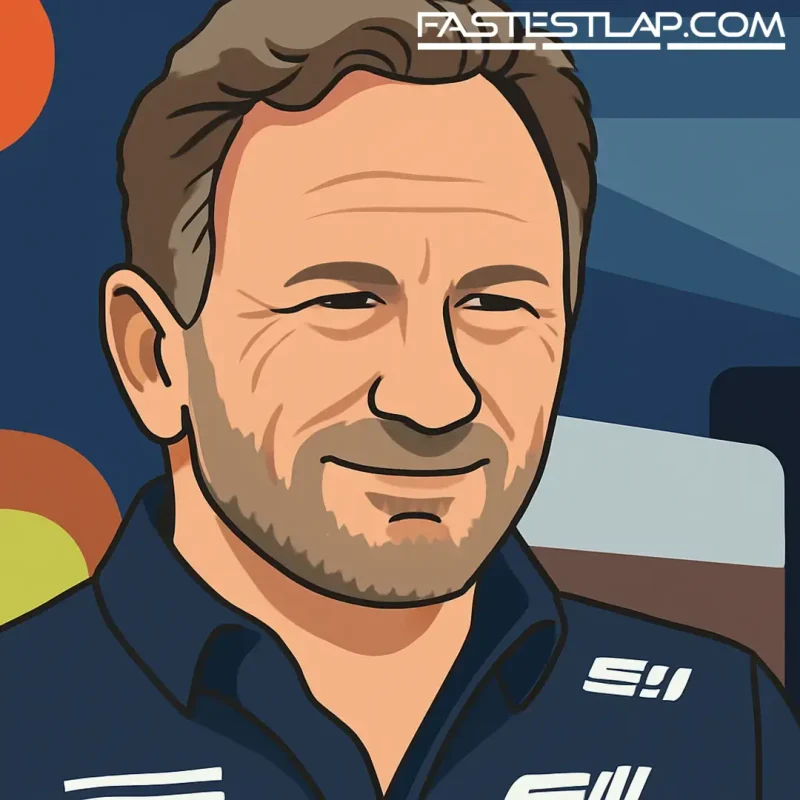Christian Horner’s exit from Red Bull has reset one of F1’s most powerful careers, and—crucially—cleared a runway back to the grid in 2026. The settlement, believed to be around $100 million, is understood to let him return by mid-season next year. The immediate question isn’t whether he’ll be back. It’s where—and on what terms.
After two decades at Milton Keynes, 124 wins and two dynasties (Vettel’s run and the Verstappen era), Horner is said to be prioritising equity and control this time, not a salaried badge on the door. That points to two lanes: build something of his own, or take the wheel of a project with headroom and an ownership path.
The clean-sheet play has real appeal. He’s marketable, proven, and still box office in a sport that values characters as much as craftsmanship. Investors know this. So does FOM, which was lukewarm on Andretti but would hardly hate a Horner-fronted bid arriving with credible backing and a storyline. It’s not a six-month exercise—Andretti/Cadillac is proof of the timeline pain—but it could be built to last. There’s also the geopolitical tailwind: FIA president Mohammed Ben Sulayem has been open about a serious Chinese manufacturer adding value, and BYD is the name that gets whispered most. Would Horner go up against that kind of bid—or align with it? Either route could work. Otmar Szafnauer is poking around similar territory, which sets up a fascinating next Expression of Interest.
If “start from zero” isn’t the play, Aston Martin is the most obvious ready-made landing spot. The infrastructure is there, the ambitions are sky-high, and the ingredients—Adrian Newey in the building, Honda engines coming, Lawrence Stroll writing the cheques—match a lot of Horner’s old world. The complication is structure. Andy Cowell’s in as CEO and team principal, and he’s already stitching together a serious operation. You don’t hire Cowell only to step on his toes; equally, Stroll has never been shy about stacking strong personalities if it moves the needle. A shareholding sweetener? Not unthinkable, especially given how Newey’s deal was framed. Cowell called Horner “a great competitor” in Singapore and stressed Aston already has “a strong setup,” which felt like a polite keep-walking rather than a hard no. If Stroll can make the org chart work, this is a contender.
Alpine is the wildcard. The team has entered yet another reset with Steve Nielsen as managing director and Flavio Briatore acting as executive advisor to Renault’s top brass. Briatore and Horner are close; if there’s a bridge back into team leadership with real influence, this could be it. Alpine’s identity crisis—especially after shuttering Viry’s works PU programme to become a customer—makes it the one team that could use Horner’s blend of operations and theatre. Officially, the team isn’t for sale, but chunks have been sold before. If the project is gently restructured with investors circling, a path to equity could materialise. It would feel a bit like Jaguar-into-Red Bull in 2004: a sleeping factory with potential and a need for someone who can turn a plan into momentum.
Then there’s Haas. Gene Haas isn’t interested in selling, and Ayao Komatsu has been quietly excellent since taking charge—landing the Toyota partnership, modernising tools, and putting a sensible lid on the chaos. But a minority stake? A CEO/TP tandem? That’s become common currency in F1, and an exploratory chat did happen via an intermediary. If Horner wants back in fast, aligning with Komatsu rather than replacing him could be a smart, low-friction solution. It would give Haas heft with sponsors and politicking, and give Horner a foothold without the headache of building a team from scratch.
As for the rest of the grid, doors look either closed or awkward. Williams has momentum under James Vowles and stable backing from Dorilton. Audi’s new regime of Mattia Binotto and Jonathan Wheatley is still wet paint and unlikely to be disrupted. Racing Bulls has been stabilised and strategically tied to Red Bull, ironically thanks in part to Horner’s commercial pull when Visa and Cash App came aboard. Ferrari has locked in Fred Vasseur. And Mercedes? Fun to imagine Horner and Toto Wolff co-existing, but it’s fantasy fuel, not a plan.
Strip all the noise away and the through-line is simple: Horner wants authority, upside, and a project that looks like his. A new team satisfies all three, if he can nail the backing and the F1 politics. Aston gives him a faster car and a route to titles if the chemistry lands. Alpine gives him a canvas and a mandate. Haas gives him the keys to the shop floor and space to build.
He’s spent the summer being a dad and taking holidays. He hasn’t lost his appetite. If the settlement’s clock starts ticking into the first half of 2026, the outlines of his next move will need to sharpen soon. Wherever he goes, it won’t be quiet—and it won’t be small.




